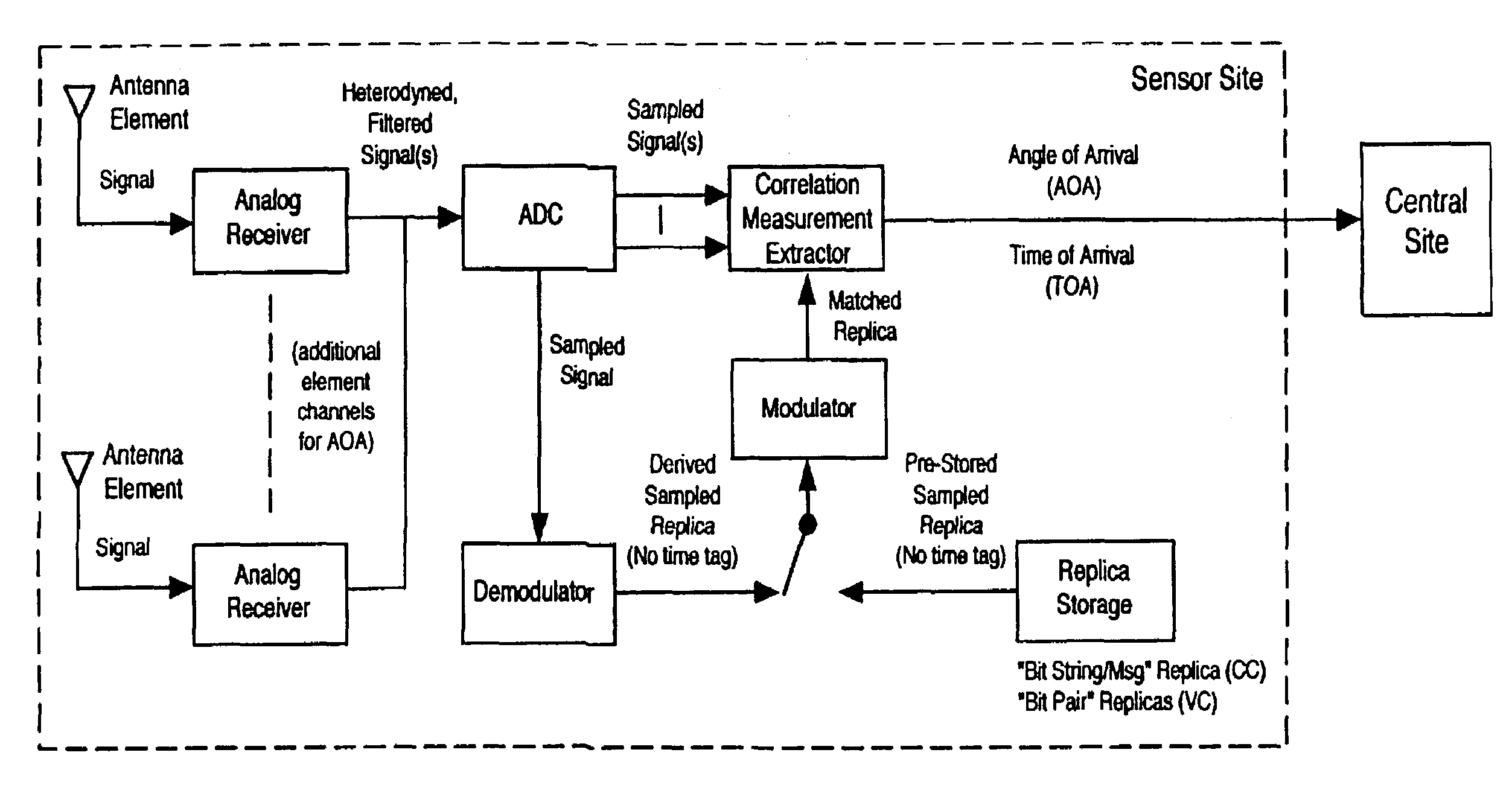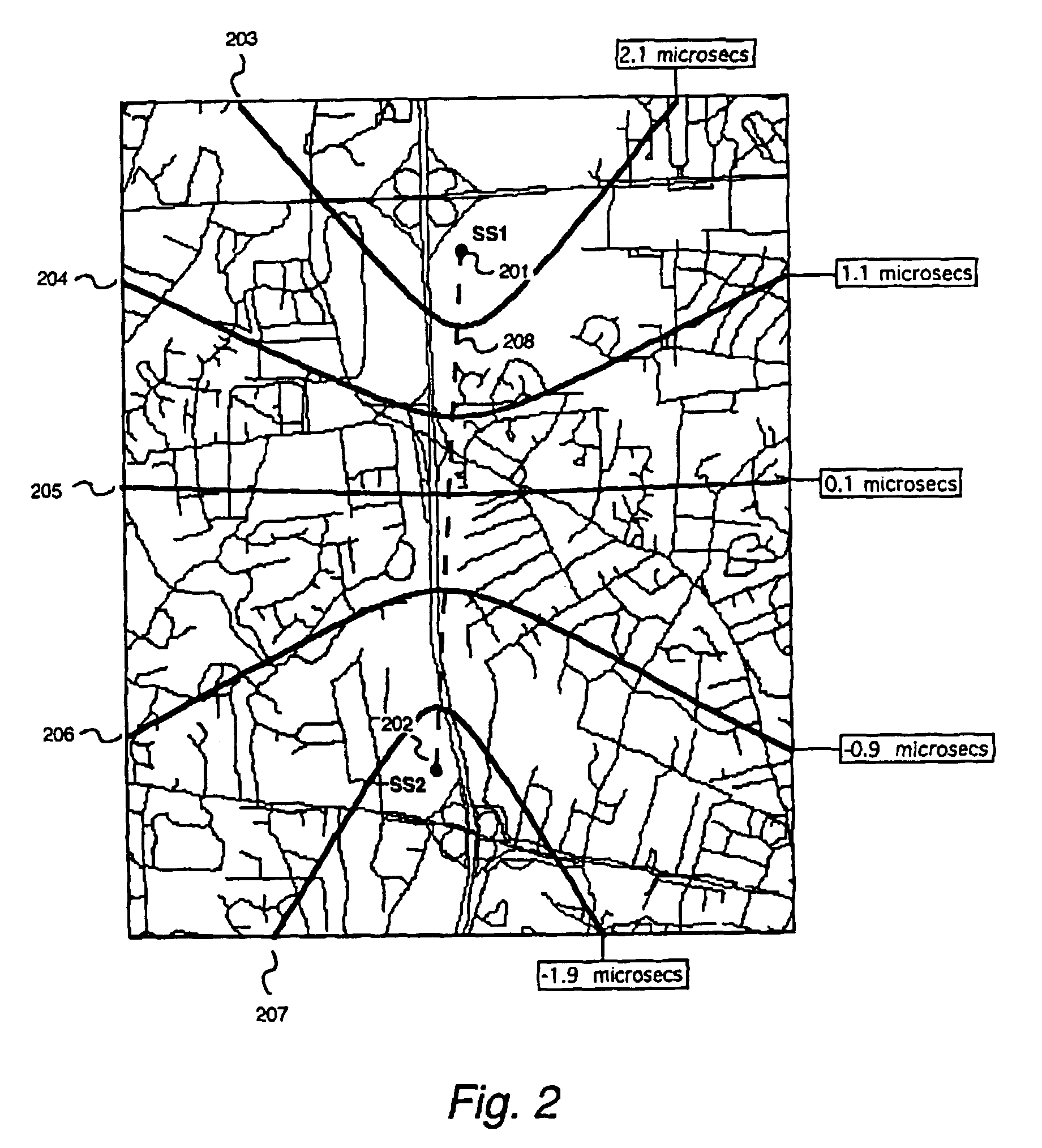Robust, efficient, localization system
a localization system and efficient technology, applied in direction finders using radio waves, wireless commuication services, instruments, etc., can solve the problems of co-channel interference, large inter-site, back-haul communication, and more difficult task of determining transmitter's location, so as to facilitate real-time determination of transmitter's locations and respond quickly
- Summary
- Abstract
- Description
- Claims
- Application Information
AI Technical Summary
Benefits of technology
Problems solved by technology
Method used
Image
Examples
Embodiment Construction
[0021]Locations of transmitters of RF signals can be determined from the geometric interpretation of measurements of parameters such as the differences in the times of arrival or the directional angles of arrival of their signals at multiple receiving sites of known location. FIG. 1 depicts a RF transmitter 101 transmitting a signal 102 that is received with antennas 103 serviced by a network of sensor sites or stations 104 distributed throughout the region of operation of the transmitter. As indicated for the transmitter shown, the transmitters to be located may be mobile, wireless, communications units, such as the telephones used in cellular or personal communications services systems. The sensor stations are connected via “back-haul communications” links 105 to at least one central site or control station 106 at which the time-difference or angle data collected from the sensor sites can be analyzed to provide the estimated locations, motions, and associated uncertainties for the...
PUM
 Login to View More
Login to View More Abstract
Description
Claims
Application Information
 Login to View More
Login to View More - R&D
- Intellectual Property
- Life Sciences
- Materials
- Tech Scout
- Unparalleled Data Quality
- Higher Quality Content
- 60% Fewer Hallucinations
Browse by: Latest US Patents, China's latest patents, Technical Efficacy Thesaurus, Application Domain, Technology Topic, Popular Technical Reports.
© 2025 PatSnap. All rights reserved.Legal|Privacy policy|Modern Slavery Act Transparency Statement|Sitemap|About US| Contact US: help@patsnap.com



